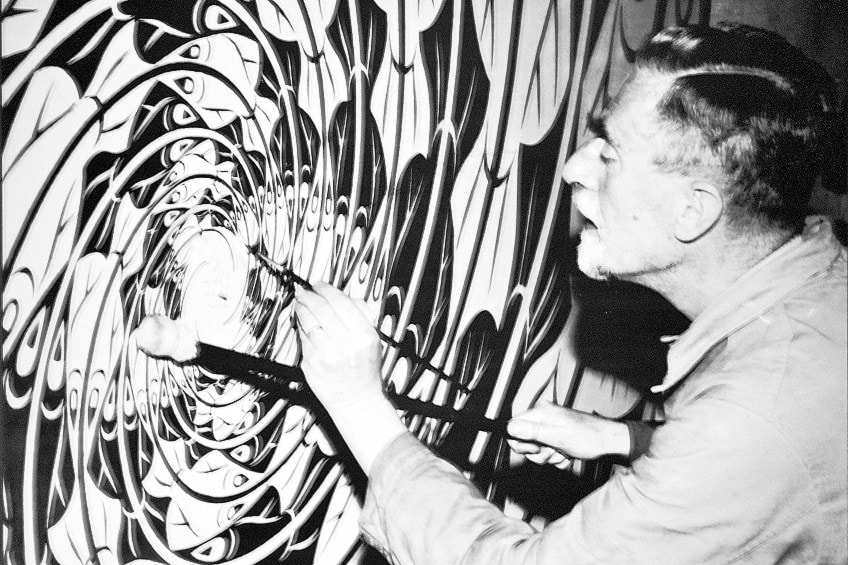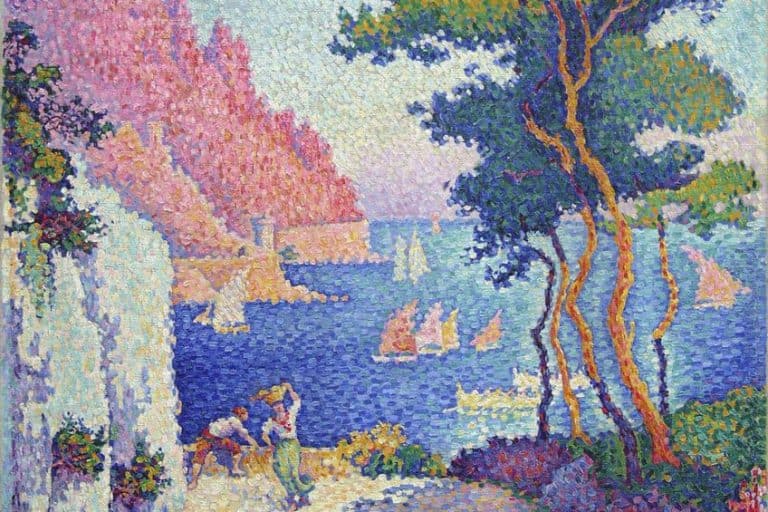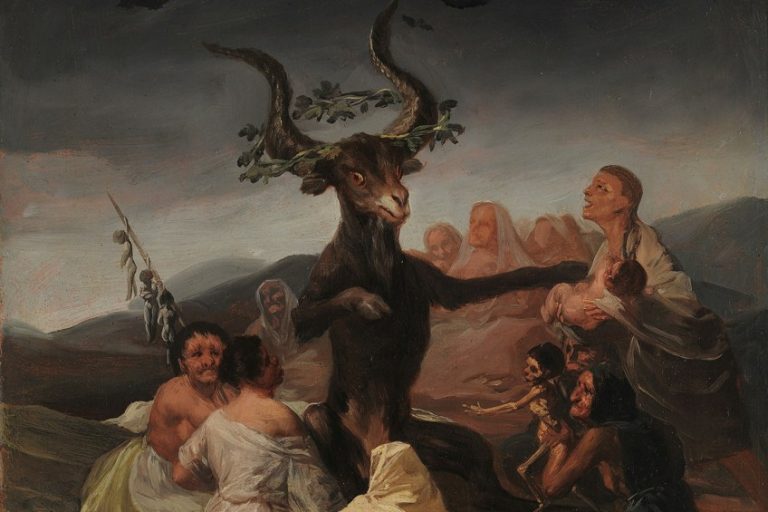M. C. Escher – The Master Printmaker Who Twisted Reality
Maurits Cornelis Escher was an artist from the Netherlands who was known for incorporating mathematical equations into his lithographs and woodcuts. M. C. Escher’s artworks were not that popular during his tenure as an artist, even in his own country. Maurits Cornelis Escher would be 70 years of age before an exhibition of his life’s work was held. M. C. Escher’s paintings would only start to be fully appreciated in the 20th and 21st centuries.
An Introduction to M. C. Escher’s Biography and Art
Escher’s drawings and paintings feature mathematically based concepts such as impossible objects, reflections on perspective, symmetry, and infinity, as well as M. C. Escher’s tessellations. Despite believing that he had no real mathematical ability, he surrounded himself with highly educated people and was adept in many fields of study. M. C. Escher’s artworks are today appreciated by scientists and the general populace alike for both their aesthetic as well as mathematical explorations.

The Early Life of M. C. Escher
On the 17th of June in 1898, M. C. Escher was born in Leeuwarden, a town in the Netherlands. Escher was the youngest child of structural architect Sarah and George Escher. The family relocated to Arnhem in 1903, where young Escher attended elementary and high schools until 1918. He was a frail youngster who was put in a private school at seven years of age, and he flunked the second grade. He was referred to by his friends as “Mauk.”
His scores were often bad, despite the fact that he shone in sketching.
He studied woodworking and music until he was 13 years of age. Escher enrolled at the Delft Technical College in 1918. He studied art and woodcutting at the Haarlem School of Architecture and Decorative Arts starting in 1919 until 1922. He momentarily pursued architecture, but after failing a series of classes (due in part to a prolonged skin ailment), he transferred to ornamental arts, where he trained under visual designer Samuel Jessurun de Mesquita.
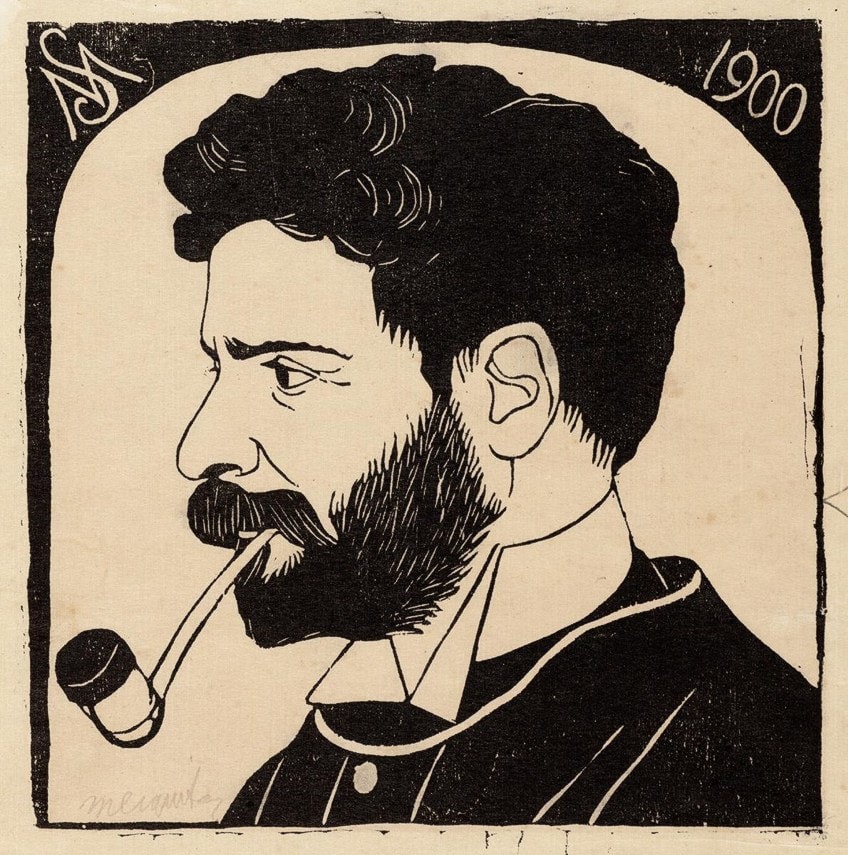
M. C. Escher’s Travel and Art
Escher traveled around Italy in 1922, a key year in his life, touring Florence, Volterra, San Gimignano, Siena, and Ravello. During the same period, he visited Toledo, Madrid, and Granada in Spain. The Italian landscape astounded him, as did the Moorish magnificence of Granada’s 14th century Alhambra.
The exquisite artistic motifs of the Alhambra, which are based on mathematical symmetry and include interconnecting repeated motifs in the colored tiles or carved into the ceilings and walls, sparked his fascination with the principles of tessellation and had a significant effect on Escher’s paintings.
From 1923 through 1935, he returned to Italy and stayed in Rome. While in Italy, Escher met a Swiss lady named Jetta Umiker who, like him, was drawn to Italy, and they married in 1924. The pair relocated to Rome, where their first son, Giorgio Arnaldo Escher, was born. Escher and Jetta went on to have two additional sons, Jan and Arthur. He traveled much, and the landscape and townscapes of his travels appear heavily in Escher’s drawings, such as Still Life and Street (1937).
Escher returned to Spain in June, visiting the Alhambra and spent days at a time doing meticulous sketches of its mosaic designs. It was here that he got obsessed with tessellation, describing it as “an extraordinarily consuming occupation, a true passion to which I have grown hooked, and from which I occasionally find it difficult to draw myself from.”
The images he produced in the Alhambra became a key source of inspiration for M. C. Escher’s artworks from then on.
He also examined the architecture of Cordoba’s Mezquita, a Moorish mosque. This was to be his final extensive research tour; after 1937, his works were made in his studio instead of in the outdoors. His painting shifted dramatically from being mostly empirical, with a heavy emphasis on the actual aspects of things observed in the city and countryside, to becoming the result of his geometric calculation and aesthetic creativity, such as in his artwork Day and Night (1938). Nonetheless, his early work demonstrates curiosity in the structure of space, the odd, viewpoint, and various perspectives.
The Later Life of M. C. Escher
Escher felt dissatisfied with the political situation in Italy beneath Mussolini in 1935. He had little enthusiasm for politics and found it hard to be involved with any principles other than the representations of his own views via his own art, although he was opposed to extremism and dishonesty. When George, his eldest son, was obliged to wear a Ballila outfit to school-aged only nine, the family left Italy and traveled to Switzerland, where they stayed for two years.
In 1935, the Netherlands Post Office commissioned Escher to create a postal stamp for the “Air Funds,” and then again in 1949, he created Dutch stamps.
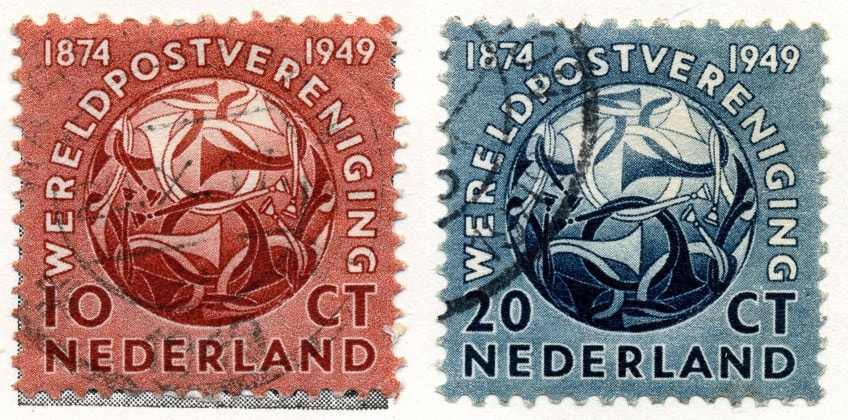
Escher, who had been influenced and fascinated by the vistas of Italy, felt dissatisfied in Switzerland. The family relocated to Uccle, Belgium, in 1937. In January of 1941, World War II compelled them to relocate, this time to Baarn in the Netherlands, where Escher stayed until 1970. The majority of Escher’s best-known paintings were created during this time period, such as Relativity (1953) and Bond of Union (1956). The weather in the Netherlands, which was occasionally overcast, chilly, and damp, helped him to concentrate on his job.
Escher taught extensively after 1953.
A scheduled program of seminars in North America in 1962 was canceled due to sickness, and he temporarily ceased making works, but the pictures and material for the courses were ultimately released as part of the book Escher on Escher (1986). In July 1969, he completed his final piece, Snakes (1969), a massive woodcut with triple spherical symmetry in which snakes meander through a network of connected rings. These diminish to infinity as they approach the middle and border of a circle.
It was extremely detailed, being produced using three blocks, all rotated three times around the picture’s middle and carefully positioned to eliminate gaps and overlapping, for a maximum of nine print processes for each final print. Escher’s appreciation of geometry, interconnecting designs, and, toward the end of his lifetime, his quest to eternity are all encapsulated in his artwork such as Metamorphosis III (1968). A video clip shows Escher’s attention to detail in developing and manufacturing this woodcut. In 1970, Escher relocated to the Rosa Spier Huis in Laren, an artists’ elderly community with his own workshop. He died on the 27th of March in1972, at the age of 73, at a clinic in Hilversum. He was laid to rest in Baarn’s New Cemetery.
The Mathematically Inspired Artwork of M. C. Escher
M. C. Escher’s artwork is inextricably linked to mathematics. This has resulted in a schism between his outright public success and the lack of reverence with which he has been regarded in the world of art. His creativity and skill of graphic methods are admired, although his works have been criticized for being excessively academic and lacking in lyricism.
To some extent, genres such as visual art have altered the art world’s attitude toward intellectuality and poetry, but this did not redeem Escher because conventional critics still despised his storytelling elements and use of viewpoint.
However, these same characteristics made his art extremely appealing to the general people.
Escher is hardly the first painter to study mathematically based topics; Parmigianino studied the reflection and geometry of spheres in his Self-portrait in a Convex Mirror (1524), displaying his own image in a curved mirror.
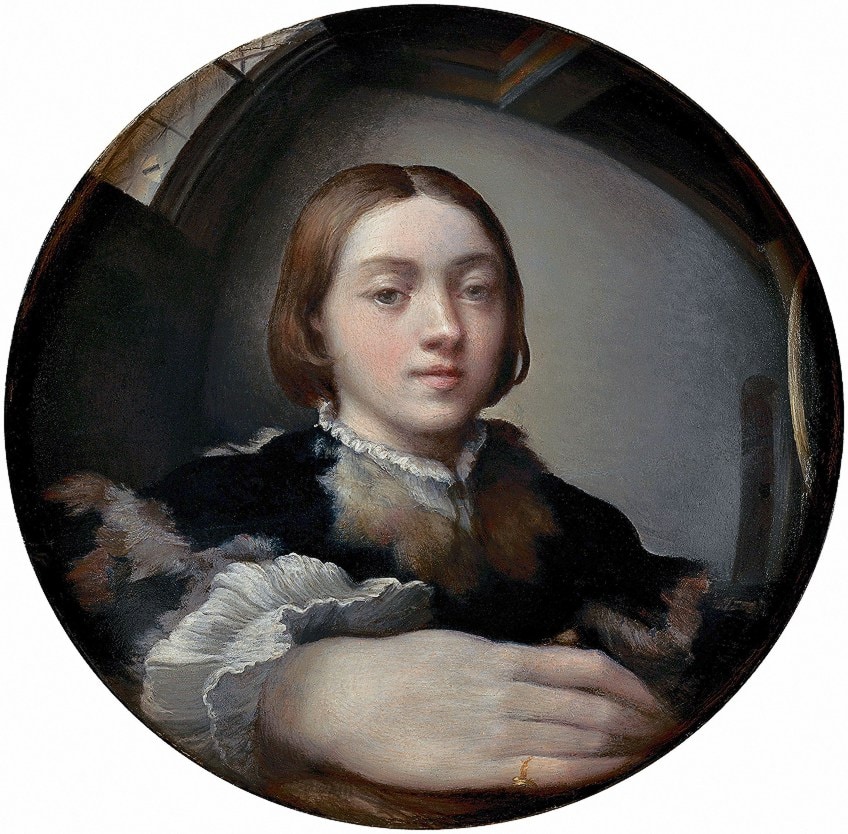
Only with 20th-century styles like De Stijl, Cubism, Dadaism, and Surrealism did popular art begin to investigate Escher-like methods of viewing the world from several perspectives at the same time. Nevertheless, although having much in connection with, say, Magritte’s surrealism, Escher did not collaborate with any of these groups.
M. C. Escher’s Tessellations
Escher began his career by sketching sceneries and wildlife. In addition, he drew insects including bees, ants, locusts, and mantises, which showed often in his later career. His early adoration of Italian and Roman landscapes, as well as the natural order, sparked a curiosity in tessellation, which he dubbed “Regular Division of the Plane”.
This would become the title of his book published in 1958, which included renderings of a sequence of woodcuts premised on tessellations of the plane, in which he defined the methodical accumulation of numerical models in his works of art.
“Academics have unlocked the door leading to a broad realm,” he stated.
After sketching the Moorish buildings and tessellated tile patterns at the La Mezquita in 1936, He began to study the qualities and potential of tessellation using geometrical matrices as the foundation for Escher’s drawings. He then used these to create complicated interconnecting patterns with creatures such as reptiles, fish, and birds. His Study of Regular Division of the Plane with Reptiles (1939), built on a geometric matrix, was among his earlier efforts at tessellation. The heads of the white, green, and red reptiles meet at a vertex, and the creatures’ sides, limbs, and tails perfectly intertwine. It served as the inspiration for his Reptiles (1943).
His initial foray into maths began with articles on planar symmetrical groupings by George Pólya, which were provided to Escher by his scientist brother Berend. He meticulously researched the 17 classical wallpaper groups and designed regular tilings with 43 drawings of various sorts of symmetries.
From then on, he used his own language to build a mathematical technique to manifestations of symmetry in his paintings. He began making woodcuts based on the 17 groupings in 1937. His Metamorphosis I (1937) was the first of a sequence of works that used visuals to tell a narrative. He created a human theme by transforming convex polygons into periodic motifs in a grid in Metamorphosis I.
Geometry in M. C. Escher’s Artworks
Although Escher had no formal mathematical background, his grasp of mathematics was mostly pictorial and instinctive, and some of the realms he created were based on impossible items. Escher began painting vistas in Corsica and Italy with uneven viewpoints that are unachievable in natural shape around 1924. Still Life and Street (1937) would be his first print of an unreal environment; impractical staircases and numerous visual and gravitational viewpoints appear in popular pieces such as Relativity (1953).
House of Stairs (1951) piqued the curiosity of Roger Penrose, a mathematician, and his father, a biologist named Lionel Penrose. They produced a dissertation titled Impossible Objects: A Special Type of Visual Illusion (1956) and subsequently provided a copy to Escher. Escher responded, complimenting the Penroses’ ever-rising flights of stairs, and enclosing a print of Ascending and Descending (1960).
The tribar, which Escher utilized often in his print of a skyscraper that seemingly functions as a perpetual movement engine, Waterfall (1961), was also included on the page. In 1935, Escher was inspired by Hieronymus Bosch’s The Garden of Earthly Delights (1500) to create a portion of its right side, Hades, as a print. With his lithograph Belvedere (1958), he repeated the figure of a Medieval lady in a two-pointed headpiece and a flowing robe; the picture, like so many of his other “amazing created settings,” is populated with “tricksters, scoundrels, and philosophers.”
Thus, Escher was not only engaged in inconceivable or unattainable geometry, but he was also a “realism fanatic,” combining “formal amazement with a visceral and distinctive vision,” in his own description.
Escher mostly worked with woodcuts and lithographs, but the little mezzotints he created are regarded classics of the medium. He depicted mathematical correlations between forms, characters, and environment in his graphic work. Mirror images of cylinders, orbs, squares, circles, and swirls were included in his works.

Escher was also captivated by mathematical structures with only one surface, such as the Möbius strip. His wood etching Möbius Strip II (1963) portrays a line of ants moving endlessly over what appear to be the object’s two opposed faces at any given time—which, upon closer scrutiny, are shown to be portions of the strip’s continuous edge. In the words of M. C. Escher, “an infinite ring-shaped ring often contains two separate surfaces, one within and one without. On this strip, however, nine ants move after one another and traverse both the top and back sides. As a result, the strip has only one surface.”
After 1936, when he courageously asked the Adria Shipping Company if he could travel with them as a traveling painter in exchange for making sketches of their boats, they surprisingly consented, and he traveled the Mediterranean, gaining interest in symmetry and order.
This voyage, particularly his return to the Alhambra, was regarded by Escher as “the greatest reservoir of creativity I have ever accessed.” In another instance of positive reciprocal interaction, Escher’s fascination with curvilinear perspective was supported by his friend, the art historian, and artist Albert Flocon. Along with Leonardo da Vinci, Wenzel Jamnitzer, Girard Desargues, Abraham Bosse, and Père Nicon, Flocon classified Escher as a “thoughtful creative”. When Flocon read Escher’s Graphics in Drawing (1959), he was enthralled.
Studies of Platonic Solids
Escher frequently used three-dimensional items in his works, including Platonic solids like cubes, spheres, and tetrahedrons, as well as mathematical structures like stellated polyhedra and cylinders. He blended two- and three-dimensional imagery in the lithograph Reptiles. Escher underlined the relevance of dimensions in one of his publications:
“The surface frustrates me—I want to tell my things, you’re too fake, lying there next to each other stagnant and frozen: do anything, get off the page, and show me what you’re capable of! So I force them to exit the plane. My things… may eventually return to the plane and vanish into their original location.”
Mathematicians like Doris Schattschneider appreciate Escher’s utilization of geometric aberrations in his paintings. In one work, for example, creatures crawl over a stellated dodecahedron. The two towers of Waterfall‘s inconceivable skyscraper are capped by complex polyhedra, one of which is a composite of triple cubes and the other is a stellated rhombic dodecahedron known as Escher’s solid.
This solid appears in Escher’s woodcut Stars (1948), which also includes all five Platonic solids and different stellated solids symbolizing stars; the center solid is moved by chameleons ascending through the framework as it spins in space. Escher had a refracting telescope and was a knowledgeable enough hobbyist astronomer to have observed double stars.
Explorations of Levels of Reality, Hyperbolic Geometry, and Infinity
Escher’s creative expression was inspired by mental visions rather than real observations and excursions to other nations. Drawing Hands (1948), which depicts two hands sketching each other, demonstrates his fascination with the numerous layers of realism in art.
It’s a nice portrayal of one of Escher’s long-standing interests: the juxtaposition between the two-dimensional uniformity of a piece of paper and the appearance of three-dimensional depth that certain markings might produce. The flat plane and space co-habit Drawing Hands, each generated from and reverting to the other, the magic of creative illusions made weirdly palpable.
The International Congress of Mathematicians gathered in Amsterdam in 1954, and N. G. de Bruin prepared a show of Escher’s works for the attendees in the Stedelijk Museum. Escher’s instinctive math struck Roger Penrose. Penrose’s tribar was motivated by Relativity, and his father created an unending stairway. Roger Penrose gave designs of these things to Escher, and the process of innovation was completed when Escher developed the Waterfall perpetual movement engine and the ceaseless march of the cleric people in Ascending and Descending.
Coxeter gained permission from Escher in 1957 to use two of his pictures in his work Crystal symmetry and its extensions. He forwarded a duplicate of the article to Escher, who noted that Coxeter’s illustration of a hyperbolic tessellation “managed to deliver a rather surprising shock”:
The unlimited routine recurrence of the motifs in the hyperbolic plane, expanding rapidly tinier towards the side of the circle, was exactly what he was looking for to permit him to portray infinity on a two-dimensional surface.
Escher meticulously examined Coxeter’s figure, marking it up to examine the gradually smaller circles with which it was built (he reasoned). He then drew a schematic and submitted it to Coxeter to exhibit his assessment; Coxeter verified it was right, but surprised Escher with his extremely technical response. Nonetheless, Escher persevered with his use of hyperbolic tiling, which he dubbed “Coxetering.” Circle Limit I–IV (1959), a series of wood engravings, was among the outcomes. Coxeter revealed his discovery that these efforts were extremely exact in 1959: “Escher got it perfectly right to the millimeter.”
The Legacy of Escher’s Paintings
Escher’s unique style of reasoning and rich drawings have had a long-lasting impact on maths, arts, and modern culture. The National Gallery of Art (Washington, DC), the Escher Museum in The Hague, the Israel Museum, the National Gallery of Canada, and the Huis ten Bosch are the principal institutional collections of M.C. Escher’s original works.

Exhibitions
Despite widespread popular attention, Escher was long overlooked in the world of art; even in his home Netherlands, he had to wait until he was 70 before a commemorative show was mounted. Major exhibits have been organized in cities all around the world throughout the 21st century. In 2011, a show of his art in Rio de Janeiro drew over 573,000 visitors; with a daily visitor total of 9,677, it was the most attended museum exhibit of the year anywhere else in the globe.
There was no significant exhibit of his works in the UK until 2015 when the Scottish National Gallery of Modern Art hosted one in Edinburgh from June until September 2015.
The exhibit banner is modeled on Escher’s Hand with Reflecting Sphere (1935), which depicts the artist’s concern in degrees of actuality in artwork (e.g., is the palm in the front more real than the mirrored one? ), viewpoint, and spherical mathematics. In 2015 and 2016, the show relocated to Italy, drawing over 500,000 people in Rome, Bologna, and later Milan.
Science and Mathematics
Doris Schattschneider names 11 lines of mathematics and scientific inquiry that Escher foresaw or directly influenced. These are the classifications of regular tilings based on tile edge connections:
- Color symmetry;
- Transformation or topological transform;
- Covering areas with symmetric designs;
- Escher’s algorithm (for producing patterns utilizing embellished squares);
- Producing tile forms; local versus global interpretations of frequency;
- Uniformity of a tiling stimulated by tile symmetry;
- Orderliness is not stimulated by symmetry clusters.
Popular Culture
When Martin Gardner published Escher’s works in his April 1966 edition of his Mathematical Games column in Scientific American, his reputation in mainstream culture soared. Many cover art feature Escher’s paintings such as albums by The Scaffold’s (1969), Mott the Hoople (1969), Beaver & Krause (1970), and Mandrake Memorial (1970). His painting has also appeared on several book covers. The “World of Escher” sells posters, bow ties, shirts, and puzzles with Escher’s work.
Postage stamps honoring the painter and his artworks have been released in the Netherlands and Austria.
Accomplishments of M. C. Escher
Despite his lack of formal mathematics instruction, Escher possessed an instinctive and sophisticated knowledge of the subject. Many of his artworks were created using geometry, while others included mathematical structures. Furthermore, several of his prints serve as visual analogies for abstract notions, notably infinity, which Escher grew fascinated in later in his work. Throughout his lifetime, Escher stayed up to date on new theories in the area and communicated with various famous mathematicians on interconnected and impossible designs, integrating their concepts immediately into his artwork.

Escher emphasized the dilemma of depicting three-dimensional things on a two-dimensional plane, as shown in pictures like Drawing Hands (1948), wherein palms (apparently simultaneously) participate in the contradictory process of creating each other into being. As a painter, Escher operated independently and was not linked with any organization, even Surrealism, which inspired his pictures.
His works influenced the evolution of Op Art, although he refused to be associated with the trend, noting that “there are young folks who continuously come to inform me: you, too, are doing Op Art… Op Art, I do not have a clue what you’re talking about.” Escher used three different printing methods: mezzotints, lithographs, and woodcuts. His complex and exact pictures took a long time to develop and required a great lot of expertise and hand dexterity.
Over the span of his 60-year tenure, he created 448 prints, averaging only around eight per year.
Famous Artworks
If you have enjoyed this article, you might decide to explore the artist’s work further. In order to make this task easier, we have compiled a list of some of his most famous works. These works will give you a better understanding of the artist’s style and techniques.
- Relativity (1953)
- Drawing Hands (1948)
- Ascending and Descending (1960)
- Waterfall (1961)
- Reptiles (1943)
- Belvedere (1958)
Further Reading
M. C. Escher lived a fascinating life and created amazingly intricate artwork. However, there is only so much one can cover in a single article. If you would like to learn more about this particular artist, then we can recommend the following books to you:
M. C. Escher: His Life and Complete Graphic Work by J. R. Kist (1992)
If you would like to get an in-depth understanding of the artist’s work, then you should try this book by J. R. Kist. A detailed examination of Escher’s distinctive visual investigation of time and space reproduces and extensively discusses all of the renowned visual designer’s more than 450 works. This would make a perfect Christmas or birthday gift for any lover of the arts!
- An annotated study of M. C. Escher's unique artworks
- More than 450 prints are reproduced and discussed
- Analyzing Escher's unique visual exploration of time and space
The Magic Mirror of M. C. Escher by Bruno Ernst (1987)
Escher drew parallels between science and art. His work is a fascinating mix of fantasy and realism. He is most renowned for his ‘impossible constructions,’ works that combine mathematical mathematics, architecture, and perspectives to create a visual puzzle, but he also developed delicate and unique work inspired by the Italian countryside. The majority of Escher’s work was done as prints – woodcuts or lithographs – and its appearance and subject matter were unusual in an age when abstract art was the norm. Discover more about the artist in this revealing and interesting book.
- An explorative and in-depth look at Dutch graphic artist M. C. Escher
- A unique investigation into the unknown details about Escher's life
- Includes a greater focus on the early life of this Tessellation artist
To summarize this M. C. Escher biography, we have discovered that by integrating difficult math with accurate draftsmanship and a sense for the odd, Escher blurred the lines between science and art. His art is an intriguing blend of realism and imagination. He is well known for his “impossible structures”, works that use mathematical geometry, architecture, and perspectives to create a visual conundrum, but he also created delicate and distinctive work inspired by the Italian countryside. The majority of Escher’s art was created as prints – woodcuts or lithographs and its look and subject matter were rather uncommon in an era when abstract artwork was the standard.
Frequently Asked Questions
Why Is M. C. Escher’s Art Renowned?
The reality is that Escher is somewhat of a mystery outside of his own Germany. Furthermore, despite the success of his perplexing optical illusions, Escher continues to face elitism within the sphere of fine art, where his work is sometimes dismissed as little more than technically adept graphic design. He is frequently referred to as “a one-man art movement,” which seems like a fair description given that he did not link himself with other movements in contemporary art, even the one to which he was perhaps closest in essence — Surrealism.
What Kind of Art Did M. C. Escher Make?
Escher was adept at creating powerful visuals with near-universal attraction — something that most fine painters would undoubtedly aspire to. At a period when abstract art was king, M. C. Escher’s Tessellations surprised everyone by investigating abstract themes like infinity, eternity, and the unattainable in seemingly realistic paintings that were incredibly skillfully constructed. As the average population lost touch with the art world, Escher’s prints appeared basic and straightforward. Mosque’s intricate designs influenced Escher, who concentrated his work on tessellation and recurring patterns, frequently including overlapping, interlaced pictures transforming into something new, as seen in his “Metamorphosis” series. Escher was appreciated by mathematicians since much of his meticulously studied, exact output incorporated or investigated notions like geometry, rationality, dimension, and eternity, in conjunction to eventually being a recognized worldwide artist with mounting exhibits.
Isabella studied at the University of Cape Town in South Africa and graduated with a Bachelor of Arts majoring in English Literature & Language and Psychology. Throughout her undergraduate years, she took Art History as an additional subject and absolutely loved it. Building on from her art history knowledge that began in high school, art has always been a particular area of fascination for her. From learning about artworks previously unknown to her, or sharpening her existing understanding of specific works, the ability to continue learning within this interesting sphere excites her greatly.
Her focal points of interest in art history encompass profiling specific artists and art movements, as it is these areas where she is able to really dig deep into the rich narrative of the art world. Additionally, she particularly enjoys exploring the different artistic styles of the 20th century, as well as the important impact that female artists have had on the development of art history.
Learn more about Isabella Meyer and the Art in Context Team.
Cite this Article
Isabella, Meyer, “M. C. Escher – The Master Printmaker Who Twisted Reality.” Art in Context. January 30, 2022. URL: https://artincontext.org/mc-escher/
Meyer, I. (2022, 30 January). M. C. Escher – The Master Printmaker Who Twisted Reality. Art in Context. https://artincontext.org/mc-escher/
Meyer, Isabella. “M. C. Escher – The Master Printmaker Who Twisted Reality.” Art in Context, January 30, 2022. https://artincontext.org/mc-escher/.


